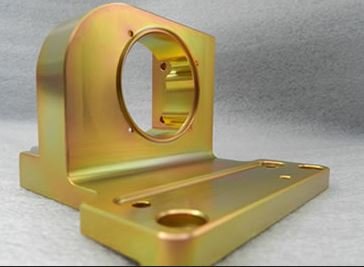
What is Chromate Conversion Coating?
Chromate conversion coating is also known as chem film, Alodine, or Iridite. It is a type of conversion coating that passivates and converts surface properties of metal parts.
Applications of Chromate Conversion Coating
Chromate conversion coating application is to passivate and protect aluminum, zinc-plated steel, copper, cadmium, silver, magnesium, and tin alloys by minimizing surface oxidation. Some of its applications include:
- Used as a primary coat for paint or powder coat.
- Excellent corrosion resistance. It can withstand 336 hours of salt spray test.
- Conductive in nature.
- Decorative finish.
Types of Chromate Conversion Coating
They are available as hexavalent chromium and trivalent chromium. Trivalent chromium is an environment-friendly RoHS compliant alternative to hexavalent chromium plating.
MIL-C-5541E Specifications
Type I (Hexavalent Chromium)
- Class-1A (Yellow): Offer the maximum corrosion protection and highest electrical resistance.
- Class-3 (Clear or Yellow): Offer the lowest corrosion protection and low electrical resistance.
Type II- (Trivalent chromium)
Class-1A (Clear): Maximum corrosion protection and highest electrical resistance
Class-3 (Clear): Lowest corrosion protection and low electrical resistance.
ASTM-B449-93 Specifications
| Coating Class | Appearance | Corrosion Protection |
|---|---|---|
| Class 1 | Yellow to Brown | Used as Final Finish Operation |
| Class 2 | Colorless to Yellow | Moderate Corrosion Resistance, generally used as paint base |
| Class 3 | Colorless | Low corrosion and electrical resistance, Used as decorative finish |
| Class 4 | Light green to green | Moderate corrosion resistance |
Hexavalent chromium plating produces byproducts (lead and barium sulfate) that are hazardous and have an impact on the environment. Most industrial standards have banned these substances and replaced them with an environmentally friendly trivalent coating.
To sum up, Chromate conversion coatings are used to passivate zinc, aluminum, copper, silver, magnesium, and tin alloys. We suggest you read this article on what is anodizing.
Got Questions?
We will be happy to help. If you think we missed Something? You can add to this article by sending a message in the comment box. We will do our best to add it in this post.

Add a Comment